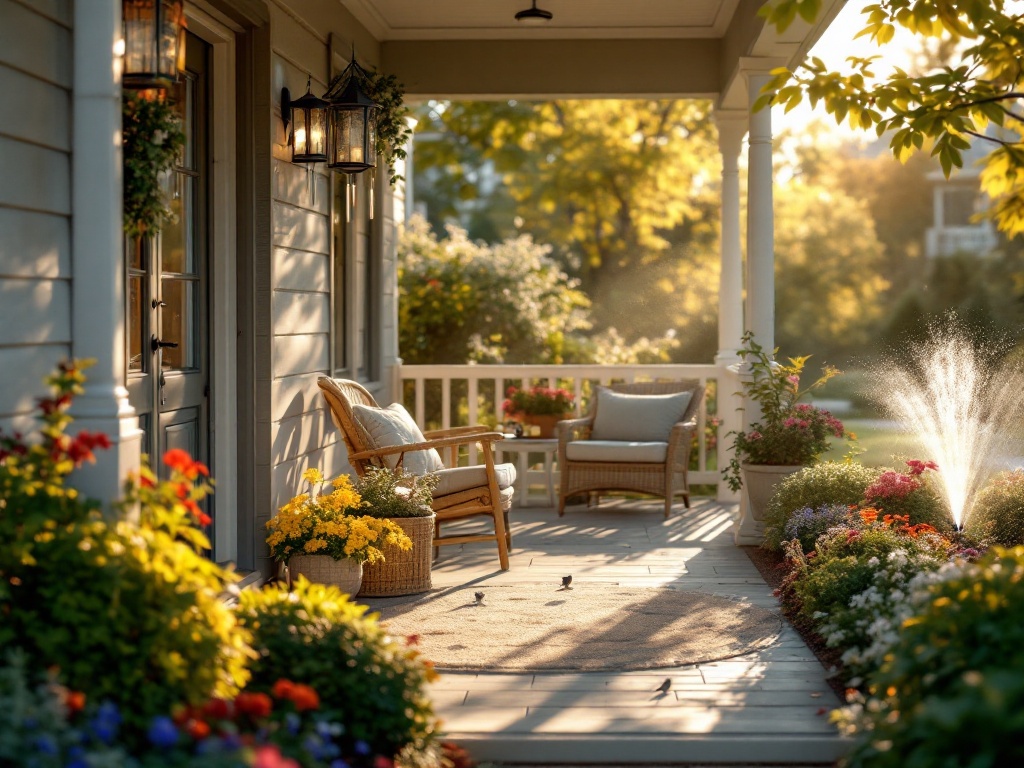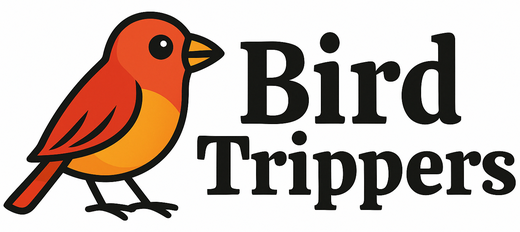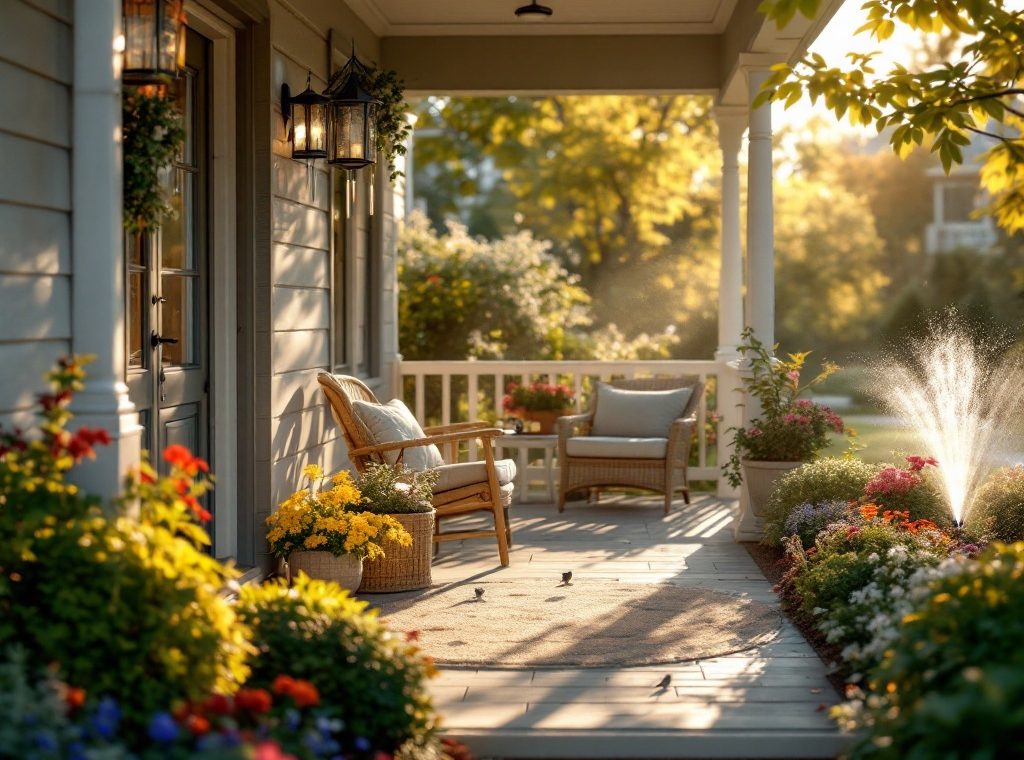Tips and Tricks to Keep the Birds Away from the Porch
Tired of birds turning your porch into their personal hangout? Discover effective and humane bird deterrent methods, from simple solutions like wind chimes and reflective tape to more robust options like bird spikes and netting. Learn how to create an unwelcoming environment for birds by removing food sources and trimming landscaping. Explore innovative ideas like motion-activated sprinklers and the intriguing “haint blue” paint tradition. Find the perfect solution for your porch and reclaim your outdoor space – read on to learn more!
Important information

- Bird spikes create a physical barrier, preventing birds from landing.
- Visual deterrents like reflective tape, mirrors, and predator decoys can scare birds away.
- Auditory deterrents such as wind chimes disrupt the environment birds prefer.
- Motion-activated lights and sprinklers startle birds, discouraging them from landing.
- Removing food sources and trimming nearby vegetation makes your porch less attractive to birds.
Understanding Bird Deterrent Methods for Porches
Physical Deterrents
These deterrents physically prevent birds from landing by making it difficult to perch. For example, bird spikes create an uneven surface, deterring birds from settling down.
Auditory Deterrents
These deterrents use noise to discourage birds. Wind chimes are a common example, but their sound can also be bothersome to humans.
Visual Deterrents
Visual deterrents scare birds away by startling them or creating the illusion of danger. Motion-activated lights provide a sudden surprise.
Decoys of predatory birds, such as hawks, trick smaller birds into thinking a predator is nearby.
Bird Spikes and Their Effectiveness
Bird spikes create a physical barrier that effectively prevents birds from landing. Research, including a University of Nebraska-Lincoln study, confirms their effectiveness on ledges and flat surfaces. These spikes, typically made of stainless steel or plastic, come in various widths. Narrower spikes deter smaller birds, while wider ones are necessary for larger birds like pigeons. The durable materials ensure long-lasting protection.
Using Wind Chimes as Auditory Deterrents
Wind chimes, while enjoyable for some, produce noise and movement that deter birds. This makes porches less attractive for landing or nesting. Combining wind chimes with other deterrents, such as reflective tape or netting, increases their effectiveness. Even used alone, wind chimes disrupt the peaceful environment birds prefer.
The Role of Motion Activated Lights
Motion-activated lights offer a simple yet effective bird deterrent. The sudden bursts of light startle birds, disrupting their sense of safety and discouraging them from nesting or roosting on your porch. This unexpected illumination makes the area undesirable, providing a safe and efficient way to keep birds away.
Implementing Decoys and Predator Strategies
Plastic owls and hawks can be initially effective in deterring birds, but their impact decreases as birds become accustomed to them.
Cats and dogs provide a more natural and lasting deterrent. A patrolling dog can prevent birds from nesting. Even a cat’s scent can discourage birds.
Creating an Unwelcoming Environment for Birds
Trim nearby trees, bushes, and hedges to eliminate potential nesting sites.
Remove bird feeders and secure your garbage bins to discourage foraging. Clean up any spilled food or crumbs.
Install screens or netting to fully enclose your porch, creating a physical barrier against birds.
Trimming Trees, Bushes, and Hedges
Keeping birds off your porch starts with simple landscaping. Regularly trim nearby trees, bushes, and hedges to eliminate potential nesting sites and perches. This makes the area less attractive to birds, discouraging them from lingering, nesting, or even landing. A well-maintained landscape effectively prevents birds from settling near your porch.
Removing Bird Food Sources
Remove bird feeders and secure trash cans to discourage birds from visiting your porch.
Eliminate tempting treats like fruits and berries from any nearby trees and bushes.
Promptly clean up spilled seed or pet food.
Regularly sweep and clean your porch, ensuring it’s free of crumbs and debris.
Enclosing the Porch: A Fail-Proof Solution
An enclosed porch offers the best bird protection, creating an impenetrable barrier that prevents nesting and roosting.
Popular screening materials include:
- vinyl,
- fiberglass,
- aluminum.
Solid windows provide complete exclusion and added temperature control.
While screens offer good protection, windows offer superior defense.
Visual Deterrents to Keep Birds Away
Reflective tape and spinners effectively deter birds by creating visual disturbances. The flashing light and movement disorient them, keeping them away from porches and similar areas. Simple solutions include:
- aluminum foil strips,
- old CDs,
- specialized bird tape.
Mirrors and pinwheels offer another visual deterrent. Reflected light from mirrors unsettles birds, while the spinning motion of pinwheels adds to the disorienting effect, further discouraging landings.
Likewise, reflective surfaces like shadow decals and Reflect-A-Bird deterrents work by creating unpredictable flashes. These flashes mimic predator movements, confusing birds and prompting them to stay away.
Employing Reflective Tape and Spinners
Reflective tape creates bright flashes that disorient birds and prevent landing, scaring them away. Similarly, spinners, such as pinwheels, deter birds with their unpredictable movements and shiny surfaces. These can be hung from porch railings or placed in planters.
Benefits of Hanging Mirrors and Pinwheels
Simple deterrents like mirrors and pinwheels can discourage birds by reflecting light and creating movement, making a porch seem suddenly unsafe. This disorientation can prevent birds from landing or nesting. However, their effectiveness is limited, as some birds adapt, and proper placement is crucial. Therefore, exploring other options is often necessary.
Using Shadow Decals and Reflect-A-Bird
Shadow decals deter birds by mimicking predators.
Reflect-A-Bird uses reflected sunlight and movement.
Both visual deterrents effectively protect areas from unwanted avian visitors.
Physical Exclusion Methods for Bird Prevention
- Bird netting forms a physical barrier, effectively protecting plants and structures by keeping birds out.
- Spike strips offer an alternative, creating an uneven surface that prevents birds from landing on railings and ledges.
- Fishing line strung across open areas blocks birds from accessing porches.
Installing Bird Netting and Spike Strips
Bird netting effectively creates a safe, bird-free zone on porches by preventing birds from landing or nesting. Alternatively, spike strips offer a humane yet effective deterrent, making railings, ledges, and other flat surfaces unusable for perching. These strips are typically constructed from plastic or stainless steel.
Effective Use of Fishing Line on Railings
Fishing line is a simple, yet effective bird deterrent. It creates an invisible barrier, preventing birds from landing on railings and other narrow surfaces. For best results, space several lines a few inches apart. This method is highly effective and commonly used on ledges and railings.
Innovative and Non-Toxic Bird Deterrent Solutions
People once painted their porch ceilings “haint blue” to deter ghosts and birds. But other effective deterrents exist.
- Plastic snakes and windsocks create movement that discourages birds from landing.
- Motion-activated sprinklers offer another solution, harmlessly startling birds with a spray of water.
Consider these alternatives to “haint blue” for deterring birds from your porch:
- Place plastic snakes or windsocks strategically on your porch. The movement will discourage birds from landing.
- Install motion-activated sprinklers. These devices startle birds with a harmless spray of water, prompting them to fly away.
Painting Porch Ceilings with Haint Blue
Painting porch ceilings a soft, “haint” blue is a time-honored tradition rooted in the Gullah culture of the southeastern United States. This pale blue hue, reminiscent of water or sky, is believed to deter birds from nesting by creating confusion. Many homeowners find this practice effective, particularly when combined with other bird deterrent strategies. It’s a simple yet aesthetically pleasing solution that may help keep your porch bird-free.
Using Plastic Snakes and Wind Socks
Keep birds away from your porch with these simple deterrents:
- Place plastic snakes strategically around your porch.
- Hang wind socks, especially those with Mylar strips. The unpredictable movements and reflections of the strips will scare birds.
- Combine visual deterrents like snakes and windsocks for a more effective approach.
Motion-Activated Sprinkler Systems
Motion-activated sprinklers offer a clever solution for pest control and irrigation. These devices deter birds by activating a sudden, harmless spray of water when they approach, effectively discouraging them from landing. At the same time, your garden receives automatic watering. This makes it a beneficial solution for your plants and your peace of mind.
Professional Recommendations for Bird Control
Protecting your porch from birds requires a tailored approach. The best method depends on the specific bird species and your porch’s structure. Here’s a breakdown of common solutions:
Physical Barriers
- Bird spikes prevent landing on railings, ledges, and other narrow surfaces.
- Netting provides a complete barrier, protecting the entire porch area from bird intrusions.
Visual Deterrents
- Reflective tape, wind chimes, or fake owls can scare birds away by creating unexpected movements and reflections.
Consulting bird control professionals is highly recommended for expert guidance. They can evaluate your situation, pinpoint the reasons birds are attracted to your porch (such as a nearby food source), and suggest the most effective solutions, including installation and maintenance.
Choosing Appropriate Bird Deterrent Products
If birds are nesting on your porch, consider these deterrents:
- Netting can prevent birds from accessing nesting areas.
- Spikes make it difficult for birds to land and build nests.
If birds are simply perching, try these options:
- Spikes can discourage birds from landing.
- Sticky pads create an uncomfortable surface for perching.
To reduce attraction:
- Remove food and water sources.
Consider visual and sound deterrents:
- Reflective tape can scare birds away.
- Predator decoys mimic natural predators.
- Motion-activated sprinklers startle birds with a sudden spray of water.
- Ultrasonic devices emit high-frequency sounds that deter birds.
Choose the most effective solution for your specific bird problem.
Consulting with Bird Control Professionals
Are you troubled by birds? Bird control experts offer effective and humane solutions to address your avian woes. These professionals employ a comprehensive approach, beginning with the identification of the specific bird species causing the issue and a thorough inspection of the affected area, such as your porch.
Species Identification and Site Inspection. Experts first identify the bird species and inspect the affected area.
Customized Plan Development. By considering bird behavior and environmental factors, they develop a tailored plan.
Humane Deterrent Implementation. The plan may involve netting, spikes, or auditory and visual deterrents.
Installation and Maintenance Guidance. Experts guide proper setup and maintenance for long-term effectiveness.
Benefits of Hiring Experts
- Effective and lasting solutions.
- Humane bird control practices.
- Expert identification of bird species and problem areas.
- Use of appropriate deterrents.
Cost Considerations
While hiring professionals involves an assessment fee, along with product and installation costs, their expertise ensures a long-term, effective solution, saving you money and frustration in the long run.














